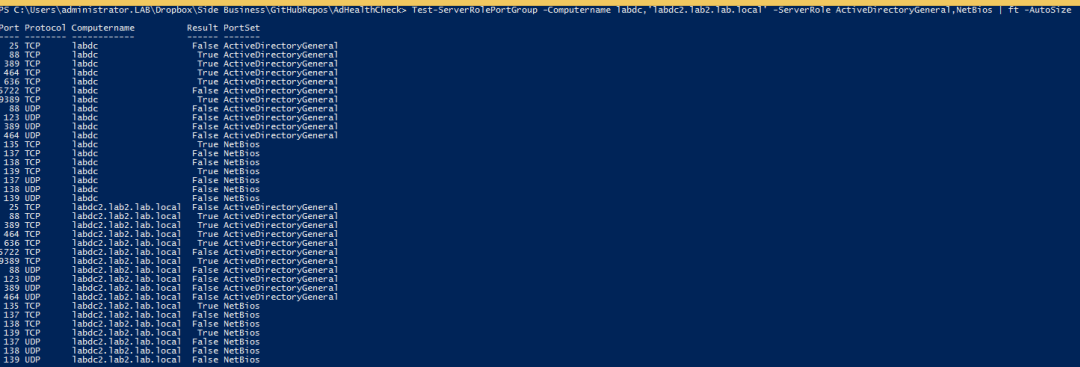لنقم بالانتقال إلى كيفية بناء أداة اختبار منفذ PowerShell التي تتيح لك اختبار الأبواب المفتوحة برقم المنفذ والتسمية.
لبناء نص قوي لن يتعثر ويموت على نصف الخوادم الخاصة بك، من المهم التأكد أولاً من أن الشروط الأساسية الموجودة من أجل الحصول على النتيجة النهائية مستوفاة.
ما هي هذه الشروط الأساسية؟ الشروط الأساسية هي الخدمات مثل FTP، HTTP، DCOM، WMI، WSMAN، إلخ. الاتصال الذي تحاول إجراؤه إلى خادم يعتمد عادةً على خدمات مثل هذه.
هناك تسلسل هرمي من عدة طبقات من الفحوصات يمكنك القيام بها على خوادمك قبل محاولة الاتصال اعتمادًا على مدى التحقق الذي تريده.
أولاً وقبل كل شيء، لديك جميع طبقات OSI للانتقال على الجانب الشبكي. هذا لا يشمل الخدمات على نظام الاستضافة الذي تقوم بتنفيذ النص منه وكل شيء آخر على نظام الاستضافة البعيد.
أحد الاختبارات الأولية التي تحتاج إلى إجرائها عند الاستعلام عن خادم بعيد هو التحقق من توافر المنافذ الشبكية المناسبة وقابليتها للوصول. يعتمد ذلك على الخدمات الجاري تشغيلها على الخادم البعيد.
I always used to either not even attempting to test port connections or fumbling around with finding that latest Test-Port script I had scavenged somewhere. Once I found it to figure out what ports I actually needed to a test ahead of time. Today was the final straw.
I needed to query a set of domain controllers before running some CIM queries against them. I went about my normal fumbling around and decided enough was enough and sat down and built my own, fully featured port testing script.
بمساعدة هذا النص من تيكنت تمكنت من إنشاء زوج جيد جداً من الوظائف في PowerShell التي لن تسمح لك فقط بفحص المنافذ TCP و UDP المفتوحة ولكن أيضاً لاختبار مجموعات المنافذ حسب دور الخادم. لا مزيد من البحث في كل مرة عن المنافذ التي تستخدمها أي خدمة!
منحت، خاصةً بالنسبة لـ Active Directory، يمكن أن تختلف المنافذ حسب نظام التشغيل للخادم، والخدمات المختلفة على مراقب النطاق، إلخ. لا تتردد في ضبطها كما تحتاج لبيئتك.
إليك صورة لشاشة مثال على الاستخدام:

كما يمكنك رؤية، يمكنك تحديد عدد غير محدود من الخوادم وسيقوم بإخراج قائمة جميلة من الكائنات مفصولة حسب مجموعة منافذ الخدمة والمنفذ لكل كمبيوتر. حتى الآن، كان ذلك مفيداً جداً! آمل أن تستفيد منه مثلما فعلت!













